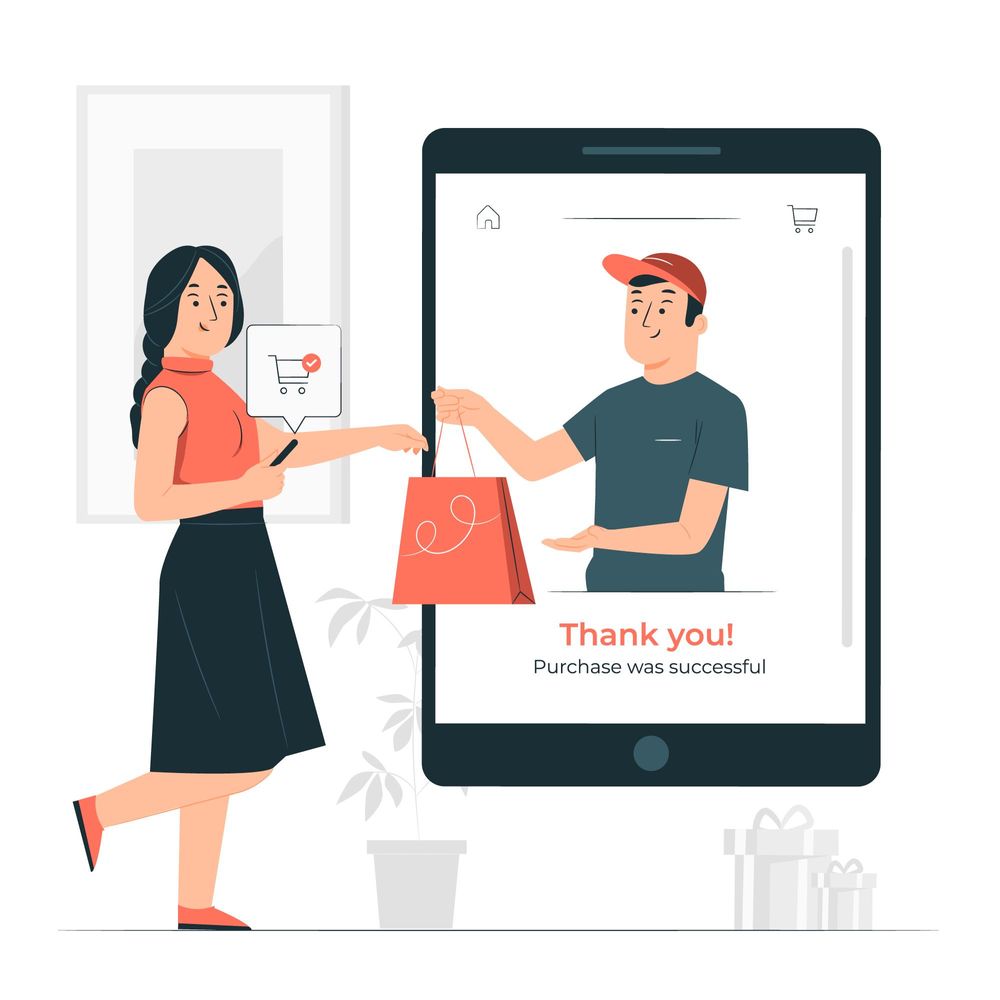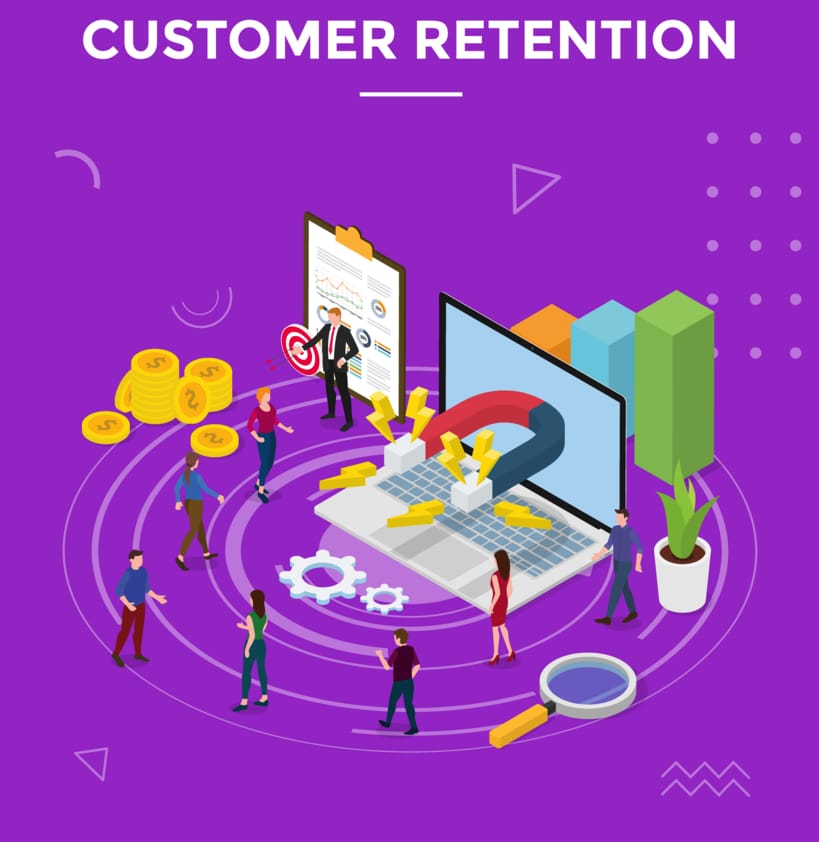An enterprise has it tough when it comes to establishing itself in the market. Not only is the competition aspect challenging to deal with, but getting your services noticed is a different ball game indeed.
First, you have to spread customer awareness and offer all sorts of genuine novelties to ensure customer retention. Then, you have to keep up with customer expectations through consistent product quality and the occasional innovations in services and loyalty programs.
It’s a lot of work considering that most customers tend to make a single purchase from a retailer before jumping to another to satisfy their essential needs. Getting new customers or retaining the existing ones doesn’t seem a big problem in front of the fact that you can’t seem to make customers stick to your services.
However, this situation is a blessing in disguise with ample opportunity to increase your business’s unique proposition value by working on improving customer stickiness quotient. Stickiness and customer go hand in hand when there is a valuable product on the table and clear communication in aiding the purchase decision.
If you’re not sure what to think of customer stickiness yet, have your own opinion after going through this article serving to help you know what is customer stickiness, its various aspects of operation, and 9 tried and tested methods to improve stickiness to strengthen customer loyalty.
So, What is Customer Stickiness?
Here’s a quick definition: Customer stickiness is the degree to which customers are loyal to a company or product. In other words, it’s a measure of how “sticky” your customers are. And yet, customer stickiness is something beyond just customer loyalty.
There are a few key factors that contribute to customer stickiness:
The quality of your product or service
This is the most important factor in determining customer stickiness. If you have a high-quality product or service, your customers will be more likely to stick around.
The level of customer service
Even if your product or service is great, poor customer service can cause customers to defect to a competitor. Great customer service, on the other hand, can keep customers loyal even if there are some hiccups with the product or service itself.
The strength of the brand
A strong brand can also help create customer stickiness. Customers who identify strongly with a brand are less likely to switch to a competitor, even if that competitor offers a better product or service.
So, how can you create customer stickiness? Here are a few tips:
- Make sure you have a high-quality product or service: This is the most important factor in creating customer stickiness, so it’s important to get it right from the start.
- Deliver great customer service: Customer service is critical to keeping customers loyal, so make sure you have a solid customer service strategy in place.
- Build a strong brand: A strong brand can go a long way in keeping customers loyal, so invest time and resources into building a strong brand identity.
How Different is Customer Stickiness From Customer Loyalty?
Customer stickiness and customer loyalty are two important concepts when it comes to retaining customers.
Customer stickiness focuses on the factors that keep customers coming back, such as a unique value proposition or a superior product. On the other hand, customer loyalty focuses on the emotional connection that customers have with a brand.
In order to create both customer stickiness and customer loyalty, you need to create a strong emotional connection with your customers.
Here is a look at the key differences between customer stickiness and customer loyalty.
Customer Loyalty refers to repeat customers who purchase from a brand on a regular basis. They may be loyal to a specific product or service, or they may simply prefer the brand over others. Loyalty can be measured in terms of historical purchase data – how often a customer buys, how much they spend, etc.
Brand loyalty is different from brand stickiness, which refers to the overall tendency of customers to remain with a brand. Stickiness is often determined by customer satisfaction – if they’re happy with the product or service, they’re less likely to switch to another brand. But stickiness can also be affected by things like price, convenience, and availability.
Both metrics are important for businesses to track, but understanding the key differences can help you better tailor your marketing, help in churn reduction, and develop ideal retention strategies.
Is creating customer stickiness difficult for you to attain?
How Does Customer Retention Differ From Customer Stickiness?
Customer retention is the key to maintaining a loyal customer base and preventing them from taking their business elsewhere. By offering quality products and services, competitive pricing, and outstanding customer service, you can keep your customers coming back for more. By investing in retaining customers, you can create a loyal customer base that will stick with your brand through thick and thin.
Since customer stickiness and retention work so well in tandem, what actually differentiates the two terms? Here is a quick look at their key differences.
- Customer stickiness refers to the amount of time a customer remains engaged with your product or service. Customer retention, on the other hand, focuses on the total number of customers you have over a period of time. In other words, customer stickiness is a measure of engagement, while customer retention is a measure of overall customer numbers.
- Another important difference between customer stickiness and retention is that customer stickiness generally results in a higher customer lifetime value. This is because customers who are more engaged with your product are more likely to continue using it (and paying for it) over the long term. As such, it’s usually more effective to target newly acquired customers with strategies designed to increase customer stickiness, rather than retention.
Ultimately, both customer stickiness and customer retention are important measures of success for any business. By understanding the differences between them, you can make sure you’re using the right strategies to grow your company in the most effective way possible.
How Does Customer Stickiness Benefit a Business?
Customer stickiness is the holy grail for any business. Having a customer base that continually comes back for more of your product or service is the key to sustainable success. There are several benefits that come with having a sticky customer base.
- For one, it’s cheaper to retain a customer than it is to acquire a new one. It costs six to seven times more money to bring in a new customer than it does to keep an existing one happy.
- Secondly, sticky customers are usually more valuable than those who only purchase once. They tend to spend more money, and they’re also more likely to refer you to their friends and family.
- Finally, sticky customers are loyal customers. They’re less likely to switch to a competitor, even if they offer a lower price. In the long run, having a loyal customer base is worth its weight in gold.
How To increase Customer Stickiness – 9 Tried and Tested methods
There are a number of factors that contribute to customer stickiness, but here are 9 key steps you can take for increasing customer stickiness and strengthening customer loyalty:
1. Define your target market
The first step to creating customer stickiness is to identify your target market. Who are your ideal customers, new customers or existing customers? What do they look like? What do they want and need from you? Do they need to make two or more purchases? Once you have a clear understanding of who your target market is, you can start to focus on creating loyalty among this group.
2. Offer excellent customer service
One of the most important ways to create customer stickiness is to offer excellent customer service. This means being responsive to customer needs, handling complaints quickly and effectively, and going above and beyond to deliver a great experience.
3. Be consistent
Consistency is key when it comes to creating customer stickiness. Make sure you’re delivering the same high level of service and quality every time a customer interacts with you. This will help build trust and confidence, which are essential for true loyalty.
4. Communicate often
Keep your customers in the loop by communicating with them regularly, whether it’s through email, social media, or another channel. Let them know about new products and services, special offers, company news, etc. This will keep them engaged with your brand and remind them why they chose to do business with you in the first place.
5. Offer incentives
Incentives are a great way to create customer stickiness. Offer rewards for your personalized customer loyalty program, such as discounts, free shipping, exclusive access to new products, or some incentive for customer referrals. This will give customers an extra incentive to stay loyal to your brand.
6. Pay attention to feedback
Make sure you’re paying attention to customer feedback and using it to improve your business. Whether it’s positive or negative, feedback can be helpful in identifying areas where you need to make changes or do better. Show your customers that you care about their experience by taking their feedback seriously and making improvements based on what they have to say.
7. Solicit reviews and testimonials
Another great way to create customer stickiness is to solicit reviews and testimonials from your satisfied customers. Social proof like this can be very persuasive, so make sure you’re actively encouraging your happy customers to leave reviews and testimonials.
8. Make business easy
Make sure your website is easy to navigate, your checkout process is smooth and simple, and your customer service is responsive and helpful. The easier you make it for customers to do business with you, the more likely they are to stick around.
9. Show that you care
Finally, one of the best ways to create customer stickiness is to show your customers that you care about them. Customers expect a general feeling of comfortableness and ease from the concerned person. This could manifest in a number of ways, such as sending a handwritten thank-you note after purchase, offering a personalized experience, or following up to make sure they’re satisfied with their purchase.
Taking these steps will help you create customer stickiness and strengthen customer loyalty as well as customer retention. Remember, customers are the lifeblood of any business, so it’s essential to focus on creating long-term relationships with them.
How Do You Measure Customer Stickiness?
There are a few key indicators that businesses can use to measure customer stickiness, or how likely customers are to return in the future.
Repeat Purchase Ratio
The repeat purchase ratio is a good place to start – this measures the percentage of customers who make a second purchase within a certain time period.
Churn Rate
Another important metric is the customer churn rate, which refers to the percentage of customers who stop doing business with a company over a given period of time.
Create and increase customer stickiness to strengthen customer loyalty now!
Customer Lifetime Value
Finally, businesses can also calculate customer lifetime value, which is the estimated revenue that a customer will generate over the course of their relationship with a company.
By tracking these key indicators, businesses can get a better sense of how sticky their customers are – and what they can do to keep them coming back for more.
Final Thoughts About Creating Customer Stickiness To Strengthen Customer Loyalty
Businesses should rethink customer stickiness and integrate it into their marketing to solidify revenue and sales while acquiring a constant flow of customers, old and new. Increasing customer stickiness will increase customer lifetime value, which in turn will result in more sales and revenue for businesses.
There are several ways to increase customer stickiness, such as providing more value, increasing convenience, and improving the overall customer experience. By incorporating customer stickiness into their marketing efforts, businesses can acquire more loyal customers who are less likely to switch to a competitor.
So, are you finally convinced that you need to rethink customer stickiness to improve your customer’s engagement experience and offer more value than just retaining them on empty promises?
Well, Growth Hackers gives you the right opportunity to create value for customers and take your online business to new heights. We are backed by professional teammates who know how to maximize the potential of your business campaigns through a wide range of certified services.
Whether it is simply marketing that you require, or consultation on improving sales or reducing churn rates, we do it all. Reach out to Growth Hackers today for more information regarding your queries and experience so we can tell you if our services are the right match for what you’re looking for and maybe soon give your customer stickiness a boost!







